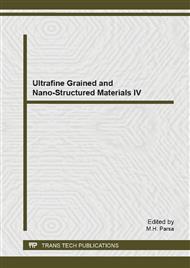p.401
p.410
p.416
p.421
p.426
p.431
p.436
p.441
p.446
Challenges Regarding to Usage of Nanostructured Materials in Contemporary Building Construction
Abstract:
Development of ultrafine grained and nanostructured materials helps other disciplines and has made a meaningful contribution to other fields especially materials and building construction. New nanostructured materials open new horizons to scientific bases of building and construction materials. Sustecture - sustainable high-tech architecture is to meet new life architectural prerequisites regarding latest achievements in material engineering and new materials developments especially smart and nanostructured materials. Despite this fact, usage of new composite materials in building construction industry had yet to be widespread. Therefore the most important question which is remained to be answered is: what are the most challenges regarding to usage of nanostructured materials in contemporary building construction Logical argumentation has been adopted as research method of this paper to answer research question, which finalized by descriptive - analytical techniques and depth diagnostic interviews. Samples have been selected randomly among from three major groups namely: 1-accademic scholars, 2-architectural consultants and 3-construction practitioners. The research is to find out the level of their awareness about new developed nanomaterials. In order to find out what are the most challenging issues which prohibited sustecture in achievement of its goals and objectives The results of the paper show that level of technical knowledge and public awareness regarding to developments of new materials is not in a satisfactory condition especially in building construction and architectural performance side. In other word, however general knowledge regarding to ultrafine grained and nanostructured materials enhanced among architectural contributors, there is not enough technical knowledge among construction practitioners.
Info:
Periodical:
Pages:
426-430
Citation:
Online since:
November 2013
Price:
Сopyright:
© 2014 Trans Tech Publications Ltd. All Rights Reserved
Share:
Citation:


